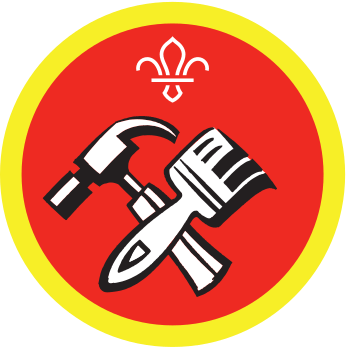
Disastrous DIY
You’ll need
- Pens or pencils
- Scrap paper
- Split into groups of about ten people. Give each group a pen and a piece of paper.
- Each group should sit in a circle. They are going to make up a story about an unsafe DIY project.
- Nominate a writer in each group. They should write down each accident and keep a list.
- The first person starts by saying ‘I went to do some DIY, but I…’, finishing the sentence with an example of an accident (such as ‘I hit my thumb with a hammer’. They should also mime doing the action.
- The second person should repeat the first person’s sentence, adding ‘and then I…’ with their own example of an accident, doing all of the actions along the way. For example: ‘I went to do some DIY but I hit my thumb with a hammer, and then I got a splinter in my eye’.
- Each player takes it in turns to say the full story so far, adding their own accident on to the end. At least some people need to use examples with electric tools.
- Once everyone has had a turn at remembering and adding their own example of an accident, groups should go through the list and talk about how they could avoid each accident.
|
Accident |
How to avoid the accident |
|
I hit my thumb with a hammer. |
Concentrate on what you’re doing and use a sensible amount of force. |
|
I got a splinter in my eye. |
Wear safety goggles. |
|
I trod on a nail. |
Wear suitable footwear and pick up anything you drop. |
|
I cut my finger on a circular saw. |
Use all safety guards and wear protective clothing. |
|
I drilled a hole in my hand. |
Turn off and unplug tools when you’re not using them. |
|
I fell off a ladder. |
Before you climb, make sure the ladder is on a level surface, and resting against a strong support. When climbing, don’t reach too far and keep three points of contact with the ladder (two hands and a foot, or two feet and a hand). |
|
I got a shock from a switch. |
Turn off electrical items before you work on them. Electricity and water don’t mix – keep them separate. |
|
I burned my hand on a soldering iron. |
Only hold the tool by the handle. Turn off and unplug tools when you’re not using them. |
|
I hurt my ears listening to the noisy tools. |
Wear ear defenders if using a noisy tool (like a hammer or drill) for a long time. |
|
I slipped on some spilled paint. |
Clean up any spillages straight away. Keep lids on things you’re not using. |
Reflection
This activity helped you to develop your communication. Did you have to listen to others to remember what they said? Was it easy to come up with ideas? How did you pay attention for the whole game? Who came up with a great idea for a safety tip?
This activity also helped you learn to be responsible. Do you know how to use tools safely? Could you be trusted to use tools responsibly now? Why is it important to use self-control around tools? Would you be able to keep yourself safe even if no one was watching you?
Safety
All activities must be safely managed. You must complete a thorough risk assessment and take appropriate steps to reduce risk. Use the safety checklist to help you plan and risk assess your activity. Always get approval for the activity, and have suitable supervision and an InTouch process.
Make it accessible
All Scout activities should be inclusive and accessible.
